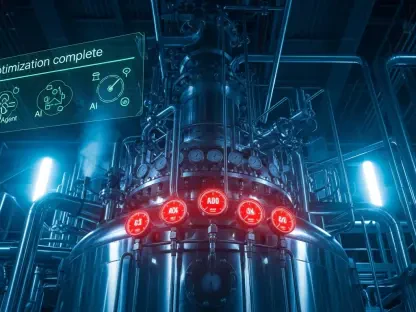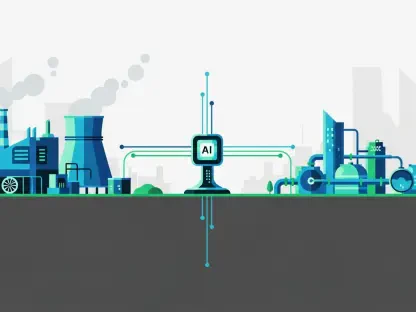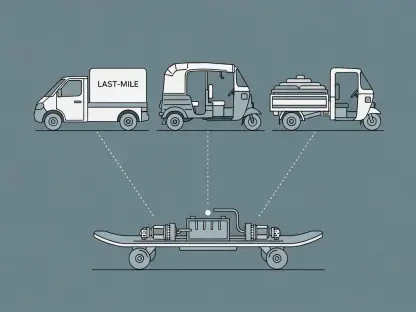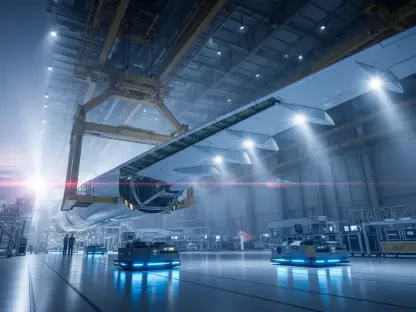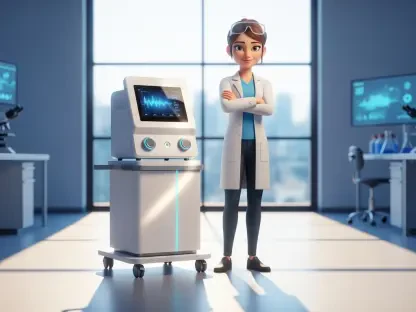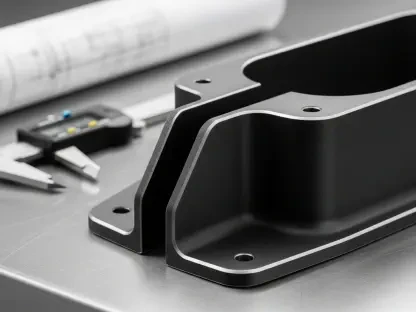In today’s fast-evolving industrial landscape, the manufacturing sector stands at a crossroads where digital innovation meets physical production through the powerful synergy of Information Technology (IT) and Operational Technology (OT). This convergence is not merely a technical trend but a transformative force redefining how factories operate, compete, and innovate. By integrating IT’s data-driven systems—such as analytics platforms and enterprise software—with OT’s hands-on control of shop floor processes through tools like IoT sensors and SCADA systems, manufacturers can unlock unprecedented levels of efficiency and responsiveness. Picture a production line where real-time data instantly shapes strategic decisions, or where virtual models predict equipment issues before they disrupt operations. This seamless blend of digital and physical realms is becoming the backbone of modern manufacturing, offering a pathway to agility, sustainability, and market leadership in a fiercely competitive environment.
Understanding the Core of IT-OT Integration
The essence of IT-OT convergence lies in the unification of two distinct yet complementary domains within manufacturing. IT focuses on the strategic handling of data through tools like enterprise resource planning and product lifecycle management systems, providing a bird’s-eye view for decision-making. Meanwhile, OT governs the tactical, ground-level operations via technologies such as Programmable Logic Controllers (PLCs) and Supervisory Control and Data Acquisition (SCADA) systems, directly managing machinery and production workflows. When these areas integrate, data flows freely across the organization, breaking down traditional silos. This creates a dynamic environment where insights from the factory floor can influence high-level planning in real time, enabling manufacturers to respond swiftly to operational challenges. Such integration fosters a holistic approach, ensuring that every aspect of the production process aligns with broader business goals, ultimately paving the way for smarter factories.
The significance of this integration cannot be overstated in the current industrial climate. Industry projections from leading analysts like Gartner highlight that a substantial number of large industrial firms are already leveraging digital twins to achieve significant efficiency improvements, while top-tier manufacturers are adopting IT-OT strategies to accelerate product development cycles. This shift is driven by the urgent need to remain relevant in a digital-first world where adaptability is key. Beyond mere survival, this convergence equips companies to anticipate market demands, optimize resource allocation, and build resilience against disruptions. As digital transformation becomes a cornerstone of industrial success, embracing IT-OT integration is less a choice and more a necessity for manufacturers aiming to maintain a competitive edge in an increasingly complex and fast-paced global market.
Technologies Fueling the Transformation
A suite of cutting-edge technologies underpins the success of IT-OT convergence, acting as catalysts for manufacturing innovation. Digital twins, for instance, serve as virtual replicas of physical assets, drawing on real-time and historical data to simulate and optimize performance. Their advanced counterparts, virtual twins, expand this concept by mirroring entire facilities, aligning design, engineering, and production in a unified digital space. Edge computing further enhances this ecosystem by processing data closer to its source on the factory floor, minimizing latency and enabling near-instantaneous decision-making. These tools collectively empower manufacturers to predict maintenance needs, streamline workflows, and adapt to changing conditions with precision. By integrating such technologies, companies can transform raw data into actionable intelligence, driving operational excellence across every facet of production.
Beyond individual tools, modern architectural frameworks are revolutionizing how IT and OT interact. Unified architectures, such as the Unified Namespace (UNS), replace outdated, rigid systems with event-driven models that ensure seamless data sharing across all levels of an organization. This shift eliminates bottlenecks inherent in traditional setups, fostering an environment where every machine, sensor, and system communicates in real time. The result is a synchronized operation capable of automating repetitive tasks, identifying inefficiencies, and responding to market fluctuations with agility. As these architectures evolve alongside technologies like edge computing, they lay the groundwork for autonomous manufacturing environments where human oversight complements machine precision. This technological backbone not only supports current needs but also prepares manufacturers for future innovations in an ever-changing industrial landscape.
Reaping the Rewards of Integration
One of the most compelling outcomes of IT-OT convergence is the dramatic boost in operational efficiency and agility it delivers to manufacturers. Predictive maintenance, enabled by integrated data platforms, can reduce unplanned downtime by a staggering margin, often cited as high as 40%, while automation of routine processes drives cost reductions in the range of 15-20%. Real-time insights gleaned from unified dashboards allow plant managers to pinpoint production bottlenecks as they occur, ensuring swift corrective action. Additionally, edge computing facilitates rapid decision-making by processing critical information on-site, empowering companies to navigate supply chain disruptions or sudden shifts in consumer demand with minimal delay. These advancements translate into leaner operations, where resources are utilized optimally, and production schedules align dynamically with market needs, positioning firms to outpace competitors.
Equally transformative are the sustainability and quality improvements that IT-OT integration brings to the table. By leveraging data to monitor and optimize energy consumption, manufacturers can make significant strides toward net-zero goals, reducing their environmental footprint without sacrificing output. On the quality front, real-time integration with quality management systems ensures defects are detected early, maintaining compliance with stringent regulatory standards. Furthermore, technologies like Augmented Reality (AR) enhance workforce capabilities by merging virtual guidance with physical tasks, improving training and troubleshooting efficiency. This dual focus on sustainability and quality not only elevates product standards but also builds trust with stakeholders, reinforcing a company’s reputation as a responsible and reliable industry player committed to long-term value creation over short-term gains.
Overcoming Barriers to Adoption
Despite its immense potential, the journey toward IT-OT convergence is fraught with significant challenges that manufacturers must address to fully realize its benefits. Cybersecurity stands out as a critical concern, with a notable percentage of OT environments having faced attacks in recent years, underscoring the need for robust defenses such as zero-trust architectures and endpoint security measures. Legacy infrastructure poses another hurdle, often incompatible with modern IT systems, which can stall integration efforts. Cultural divides between IT and OT teams further complicate the process, as differing priorities and mindsets hinder collaboration. Additionally, a persistent shortage of skilled professionals with expertise in both domains limits progress, creating a gap between ambition and execution. Tackling these issues requires a strategic approach that prioritizes security investments, gradual system upgrades, and initiatives to foster cross-departmental unity.
Fortunately, actionable solutions exist to navigate these obstacles and pave the way for successful IT-OT integration. Modular upgrades offer a practical path to modernize aging infrastructure without the burden of complete overhauls, allowing companies to transition at a manageable pace. Cross-functional training programs can bridge cultural gaps by equipping teams with shared knowledge and goals, fostering a collaborative spirit essential for convergence. To address skill shortages, partnerships with educational institutions and the adoption of user-friendly tools can empower a broader workforce to engage with advanced technologies. Meanwhile, implementing stringent cybersecurity protocols ensures that integrated systems remain protected against evolving threats. By proactively addressing these barriers with targeted strategies, manufacturers can mitigate risks and build a solid foundation for leveraging IT-OT convergence to drive lasting innovation and competitiveness.
Shaping the Future of Manufacturing
Reflecting on the strides made through IT-OT convergence, it’s evident that this integration has redefined manufacturing by merging analytical depth with operational precision. Over recent years, the adoption of digital twins, virtual twins, and edge computing has empowered factories to achieve remarkable efficiency gains and respond adeptly to market dynamics. The focus on sustainability and quality has also positioned forward-thinking companies as leaders in responsible production, while efforts to overcome cybersecurity risks and cultural silos have laid critical groundwork for sustained progress. These achievements mark a pivotal era where digital and physical operations have become inseparable, setting a new standard for industrial excellence.
Looking ahead, manufacturers must continue to invest in scalable technologies and robust security frameworks to build on past successes. Prioritizing workforce development through accessible training will be crucial to address lingering skill gaps, ensuring teams are equipped for evolving demands. Embracing modular approaches to infrastructure upgrades can further ease the transition, while fostering collaboration across departments will strengthen organizational cohesion. As the industrial landscape evolves, staying committed to IT-OT integration will enable companies to anticipate disruptions, innovate relentlessly, and secure a leadership position in a digitally driven future.



